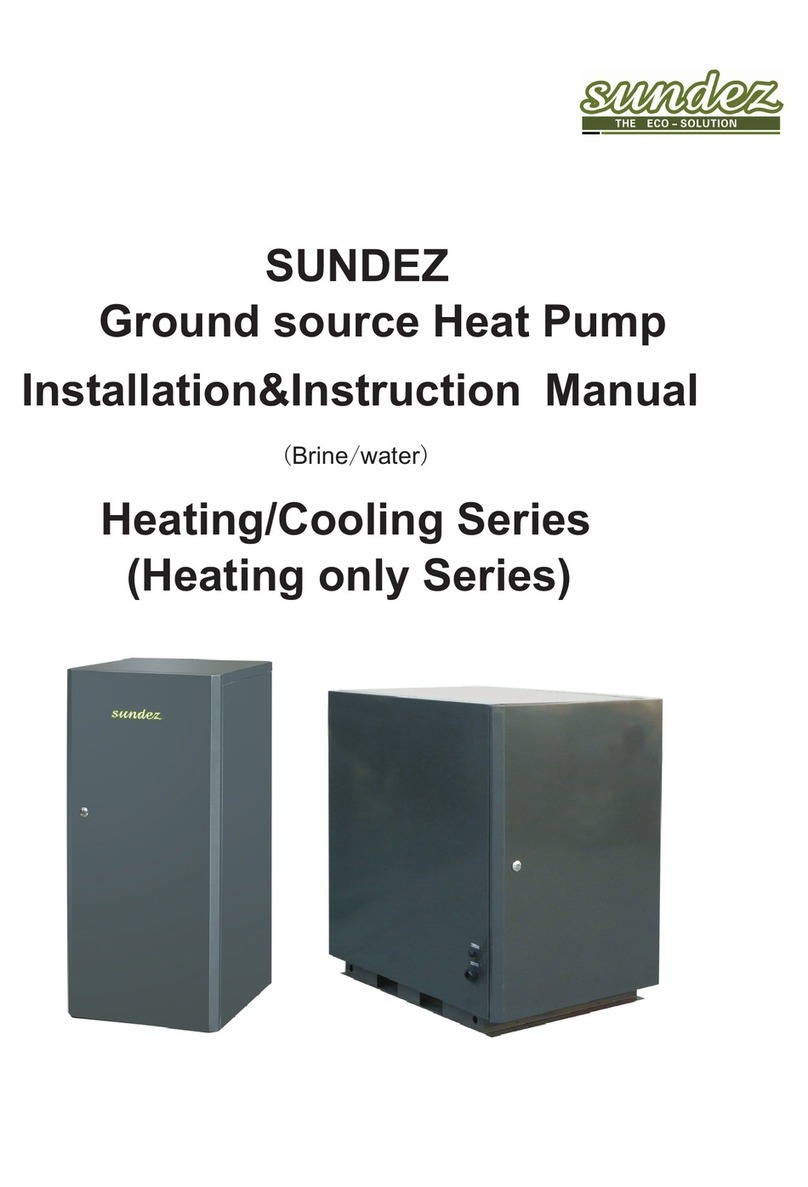Energy Saving and Environmental Friendly
With Advanced DC inverter technology, it can change the frequency and saves 40% energy than
normal heat pump in practical operation. The R410A refrigerant is friendly without pollution to the
environment.
Full Consideration for Noise Control
Compressor rubber feet are specially selected for reducing vibration. Specially, compressor is
located in the closed and isolated space inside the heat pump unit, without noise given out. Well-
balanced fans and fan motors, with the motors, with the optimized fan holder, contributes to the
low noiseoperation.The cabinet inside is insulated to reduce noise transmission.
DC Inverter Heat Pump Does Not Need Soft-starter
DC inverter heat pump technology not only saves energy, but also with soft starting feature. The
compressor motor is DC inverter type, and its starting is already soft-starting, so, no need to install
additional soft-starter, and its starting would not cause compact to your home power network.
Strong Cabinet
Standard unit fabrication consists of heavy gage galvanized sheet metal cabinet construction that
provides maximum strength. All interior sheet metal surfaces arepowder-painted for maximum
corrosion protection to ensure resilience for long term vitality. Compact, stackable cabinets are
designed to minimize installation space.
Reliable Design and Strict Quality Control
Standard safety features for the refrigerant circuit include high-pressure switch and low-pressure
switch to detect loss of refrigerant, as well as deficient water flow. Equipment safety features
include water loop temperature monitoring, voltage protection, water coil freeze protection. All
safety features are tested and run at the factory to assure proper operation of all components and
safety switches. All components are carefully designed and selected for endurance, durability, and
carefree day-to-day operation. Each unit is fully tested in performance and safety before it is
exported.
Easy Installation
Sundez DC inverter heat pumps are designed for easy installation. The refrigerant R410A has
already stored in the outdoor unit when ex-factory. The refrigerant can be released to the indoor
unit and the connecting copper tubes after vacuuming the indoor unit and the copper tubes. The
communication between the indoor unit and outdoor unit is simple with the fast plug, offering
power for circulation pump and signal for sensors and control panel on the indoor unit.
Simple Maintenance and Service ability
Full access for maintenance or service is provided from the maintenance panel, for better flexibility
in confined space. Easy removal of the control box from the unit provides access to all refrigerant
components. The refrigerant circuit is easily tested and serviced through the use of high and low
pressure ports integral to the refrigerant circuit.
3. Features
DC Inverter Heat Pump
02




























